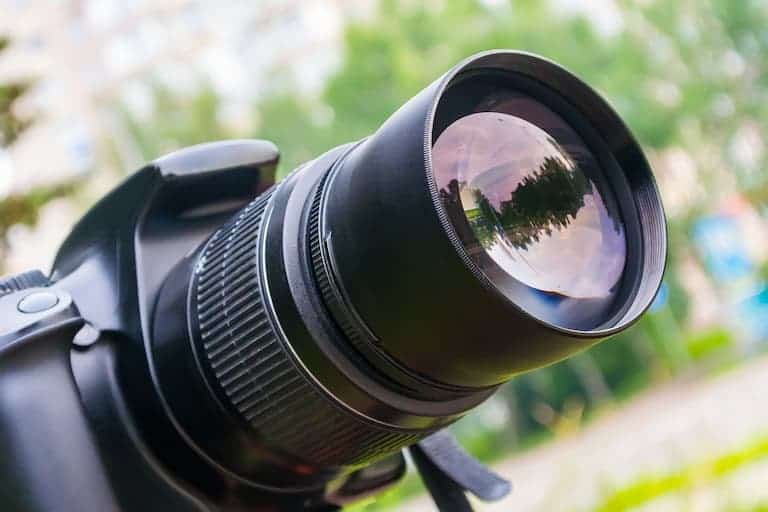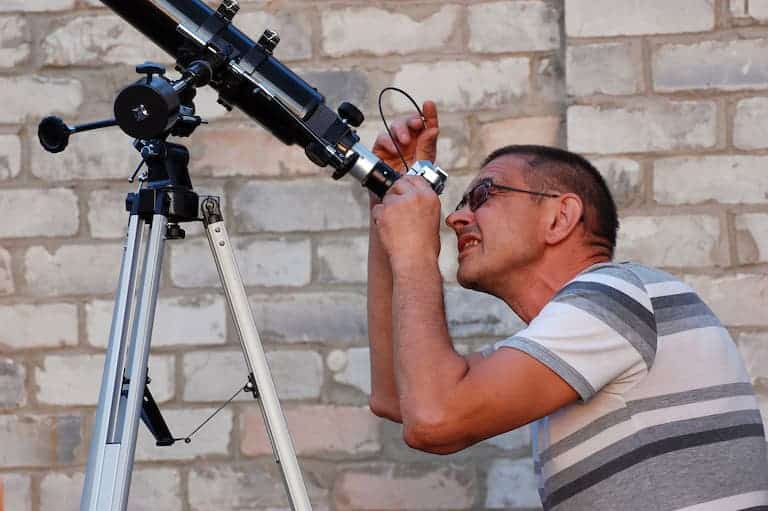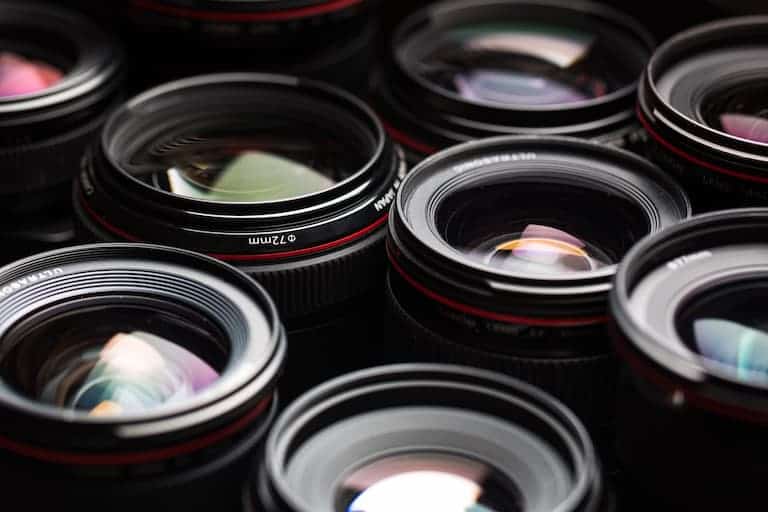Camera lenses and telescopes are popular instruments used in astronomy and night photography. They allow viewers to zoom into and capture stars, planets, and galaxies. However, you may wonder – what is the difference between a camera lens and a telescope?
While telescopes include lenses and mirrors, camera lenses use curved glass panels. A camera lens captures sharper images and offers different photography styles. Meanwhile, a telescope is best for viewing highly distant galaxies.
So, let’s zoom into the details and discuss the differences between camera lenses and telescopes. We’ll tell you the advantages and specialties of each viewfinder and tell you more about when one is more suitable than the other.
Table of Contents
What Is the Difference Between a Camera Lens and Telescope?
The difference between a camera lens and a telescope is that each is better for different purposes. While a camera lens can zoom into objects, its primary use is to help capture photos. A telescope offers better resolution at a high zoom level and crisper images of distant objects.
Camera lenses and telescopes have variances in design and performance. So, let’s go through each difference and compare them.
Camera Lens and Telescope: Design Differences
Telescopes and camera lenses have differences in design, allowing each to fulfill its purpose. Telescopes have mirrors and lenses, allowing viewers to see distant objects. Meanwhile, camera lenses work to filter and focus light so that you can easily capture an image of an object.
There are three different types of telescopes. Each has slight design differences:
- Refracting telescopes. Refracting telescopes have two different lenses – the objective lens and the eyepiece lens. The lenses work together to focus light and allow you to see distant objects in extreme detail.
- Reflecting telescopes. The reflecting telescope has an in-built mirror that reflects light from an object back onto it. This light-bouncing property illuminates the object, making it easier to see from a distance.
- Cadiotropic telescopes. These telescopes have mirrors and lenses, allowing you to focus attention and reflect light onto distant objects. Cadiotropic telescopes are advanced instruments commonly used by astronomers and researchers.
Meanwhile, there are several different types of camera lenses. Some lenses can zoom into objects, while others focus on capturing a wide frame. Here are some of the most common camera lens designs:
- Standard lens. A standard camera lens includes convex or concave glass panels designed to capture and focus light on a particular object. It then sends the light it has captured to a film strip and imprints the image resulting in the photograph. All camera lenses use this standard light-capturing method but may have slight adaptations depending on their purpose.
- Macro lens. A macro lens allows you to zoom into a close subject, allowing you to capture minute details of it.
- Wide-angle lens. A wide-angle lens automatically zooms out a focus object or area, allowing the camera to capture more of its surroundings, resulting in a 3D effect.
- Telephoto lens. A telephoto lens allows a camera to zoom into an object at a great distance and capture a clear, close-up photo of this object.
Camera Lens and Telescope: Performance Difference
Due to their design differences, telescopes and cameras perform differently. Telescopes can capture and harness light from faraway objects, allowing you to view them better. However, camera lenses are better for shorter ranges since they have less powerful light-reflecting components.

Performance Advantages of a Camera Lens
Here are the leading performance advantages of a camera lens:
- They’re portable. If you want to view and photograph stars on the go, a camera is easy to take with you.
- They’re easily adjustable. You can easily adjust and focus a camera lens to make sure you can view specific objects.
However, a camera lens has limited magnification. A camera lens won’t allow you to view significantly distant planets and constellations.
Performance Advantages of a Telescope
Here are some of the reasons a telescope may be preferable to a camera:
- You can adjust a telescope to improve the zoom and clarity. You can easily fit a guide scope and a filter over a telescope. These components allow you to ensure that you can view faraway objects with clarity.
- Telescopes are ideal for astrophotography. Telescopes offer specialized, higher magnification and can take high-quality photos of distant stars, planets, and even galaxies.
- They’re easy to focus. Since telescopes are usually larger than camera lenses, they are easier to keep stationary for more prolonged exposure, higher stability, and advanced zooming.
However, you’d note that telescopes can be heavy and hard to assemble. They are also much more expensive than camera lenses.
Should I Use a Camera Lens or Telescope?
You should use a camera lens if you’re beginning to explore the world of space photography and don’t want to get extreme close-ups of very distant objects. You’d choose a telescope if you’re a professional or aspiring astronomer or want to photograph extremely distant planets.

Here are some things you might want to consider when deciding between a camera lens and a telescope.
When To Use a Camera Lens
You should use a camera lens for the following reasons:
- You need to capture an image of an object. The most obvious reason to use a camera lens (attached to a camera) is if you need to capture a picture of an object.
- You need variety in the type of focus. A camera lens offers the flexibility of focus. For instance, you can use a macro lens to get detailed images of close objects. Then, you can switch to a telephoto lens for an object that’s far away.
When To Use a Telescope
You should use a telescope for these reasons:
- You are interested in visual astronomy. Telescopes have been designed for astronomy and are suitable for students and astronomers focused on exploring and studying space and its elements.
- You want to photograph faraway galaxies. Telescopes offer better zoom and focus as compared to cameras.
- These perform well in extremely dark environments. Telescopes have a big aperture and long focal length, accurately depicting faraway objects, even in meager light conditions.
Conclusion
While you can use camera lenses and telescopes for photography, their designs are significantly different. A camera offers a variety of different lens and focal options.
Meanwhile, a telescope allows you to view and photograph planets and galaxies from afar without compromising the image’s quality and sharpness.

